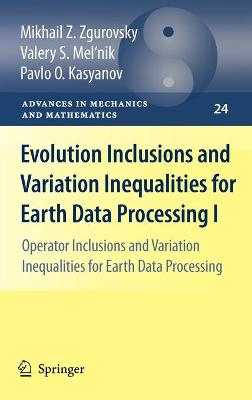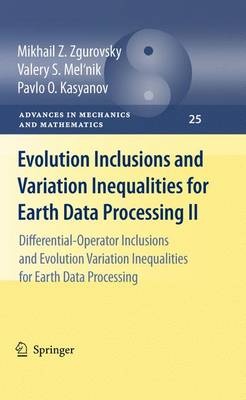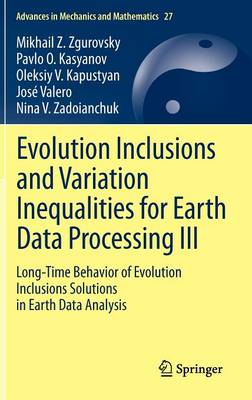Advances in Mechanics and Mathematics
3 primary works
Book 24
Evolution Inclusions and Variation Inequalities for Earth Data Processing I
by Mikhail Z. Zgurovsky, Valery S. Mel'nik, and Pavlo O. Kasyanov
Published 3 October 2010
Here, the authors present modern mathematical methods to solve problems of differential-operator inclusions and evolution variation inequalities which may occur in fields such as geophysics, aerohydrodynamics, or fluid dynamics. For the first time, they describe the detailed generalization of various approaches to the analysis of fundamentally nonlinear models and provide a toolbox of mathematical equations. These new mathematical methods can be applied to a broad spectrum of problems. Examples of these are phase changes, diffusion of electromagnetic, acoustic, vibro-, hydro- and seismoacoustic waves, or quantum mechanical effects.
This is the first of two volumes dealing with the subject.
This is the first of two volumes dealing with the subject.
Book 25
Evolution Inclusions and Variation Inequalities for Earth Data Processing II
by Mikhail Z. Zgurovsky, Valery S. Mel'nik, and Pavlo O. Kasyanov
Published 3 October 2010
Here, the authors present modern mathematical methods to solve problems of differential-operator inclusions and evolution variation inequalities which may occur in fields such as geophysics, aerohydrodynamics, or fluid dynamics. For the first time, they describe the detailed generalization of various approaches to the analysis of fundamentally nonlinear models and provide a toolbox of mathematical equations. These new mathematical methods can be applied to a broad spectrum of problems. Examples of these are phase changes, diffusion of electromagnetic, acoustic, vibro-, hydro- and seismoacoustic waves, or quantum mechanical effects. This is the second of two volumes dealing with the subject.
Book 27
In this sequel to two earlier volumes, the authors now focus on the long-time behavior of evolution inclusions, based on the theory of extremal solutions to differential-operator problems. This approach is used to solve problems in climate research, geophysics, aerohydrodynamics, chemical kinetics or fluid dynamics. As in the previous volumes, the authors present a toolbox of mathematical equations. The book is based on seminars and lecture courses on multi-valued and non-linear analysis and their geophysical application.


